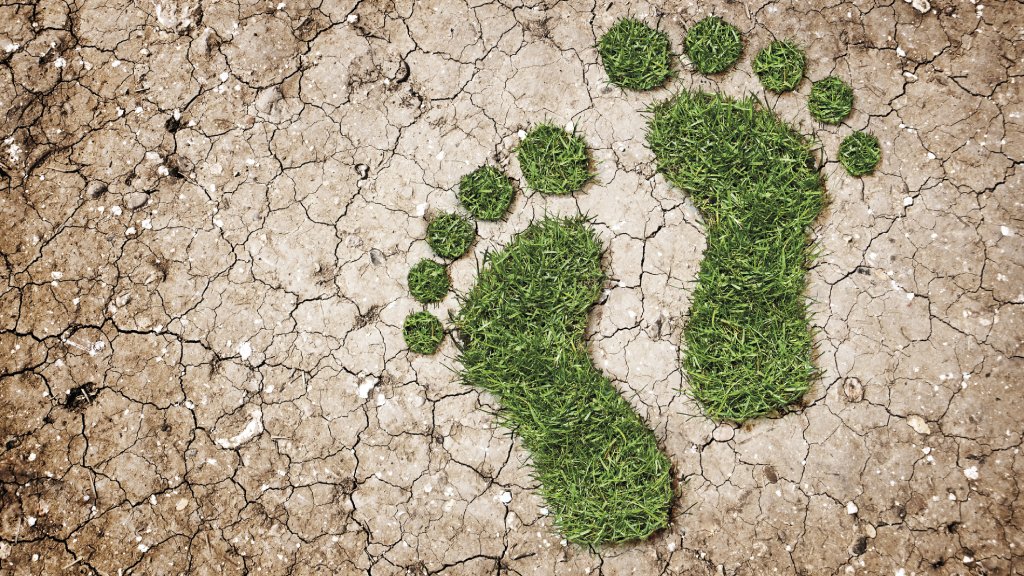Does Gardening Reduce Carbon Footprint Size?
If you’d like to learn how to reduce your carbon footprint on the Earth, start with your garden activities and planting decisions.


Excess carbon dioxide in the atmosphere has been shown to increase the temperatures of our planet. This is scary because it means weather pattern disruption, loss of habitat of certain species, and shows no signs of slowing as we live our consumer lives. Reducing the gardening carbon footprint is one way to help. Keep reading for some tips on how to reduce carbon footprint damage and help our Earth heal.
Climate change is happening. Some of this is a natural, cyclical event, but much of it is due to human activities. Over the last 150 years, excess greenhouse gasses have built up to dangerous levels.
Does gardening reduce carbon footprint problems? Sustainable gardening practices can minimize carbon emissions. Growing green, verdant plants provides an internal storage space for carbon. Practicing low-emission, sustainable gardening even in the home garden will still have a positive impact on the issue.
How to Reduce Greenhouse Emissions
Greenhouse gasses build up when gas-powered tools and vehicles are used. Switching to electrical tools and using manual methods can reduce those gasses. There is a wide variety of electric or battery rechargeable yard tools available.
Another way to reduce greenhouse emissions is by diminishing the size of your lawn. Plant eco-friendly ground covers instead of maintaining turf grass, which requires frequent mowing. Such a step also increases plant diversity and provides food and habitat for beneficial insects and animals. Lawns also need plenty of nitrogen. Synthetic fertilizers contribute to carbon emissions. Removing the lawn will suspend such a requirement.
Avoid Single-Use Plastics
Plastics emit 3% of global greenhouse gas. Reducing or even suspending the use of single-use plastic can have a huge impact.
Instead of purchasing plastic garden flats to plant seeds into, use egg cartons or other items that will compost into the soil. Instead of using plastic sheeting for hoop houses and wind tunnels, use old windows.
Sign up for the Gardening Know How newsletter today and receive a free copy of our e-book "How to Grow Delicious Tomatoes".
If you do have to use plastic, make sure it is used numerous times, and take the time to recycle it when its work life is over. Many nurseries will take and recycle plastic plant containers and flats.
Plant a Diversity of Flora
Plants and trees sequester excess carbon from the air. They store it and use some of it for energy and in the process of respiration. Having a variety of carbon-storing plants encourages biodiversity and develops a healthier landscape. Larger plants and those with larger leaves can harvest the most carbon.
Select trees, bushes, perennials, and other plants as part of a well-rounded and efficient carbon-harvesting garden. Use native plants where possible. They are adapted to their region and need less fertilizer, water, and mechanical upkeep. They are also locally sourced, further removing the carbon output of shipping.
Vegetable Garden Carbon Footprint Reduction
Growing your own food is a great way to reduce your carbon footprint. Much of our fruit and vegetable supplies come from far away. The shipping necessary produces a large amount of emissions. Eating from home can reduce this.
Start by making your own compost to minimize the debris in landfills; they produce methane, a heat-trapping gas. The compost will double as a soil additive, rich in nutrients and other benefits.
Plant a variety of the foods you like the most, avoiding anything that is not your favorite. Start seed instead of purchasing veggie starts. These often come in plastic containers and are shipped.
Add herbs and edible flowers to create drama for your recipes and appeal for the eye and our pollinator friends.
Other Eco-Friendly Activities
Many other practices can go hand in hand with carbon minimization.
Conserve water and prevent any toxic runoff from entering our groundwater. Choose drought-tolerant specimens that can make this goal easier and harvest your gray water to irrigate plants.
Reduce your use of peat-based soil mixes. Peat is non-renewable and the harvesting process releases tons of destructive greenhouse gasses.
Start an integrated pest management program. Use the least toxic formulas only when necessary and develop a year-round approach to pest management.
Avoid tilling the soil. Tilling will loosen the soil but leads it to be further compacted later. It also disrupts the structure of the soil and kills beneficial insects and microbes by exposing them to too much oxygen.
Let any disease-free plant material compost on site. Use cover crops in the off-season that can be used to prevent soil erosion, increase tilth, and enrich the soil.

Bonnie Grant is a professional landscaper with a Certification in Urban Gardening. She has been gardening and writing for 15 years. A former professional chef, she has a passion for edible landscaping.